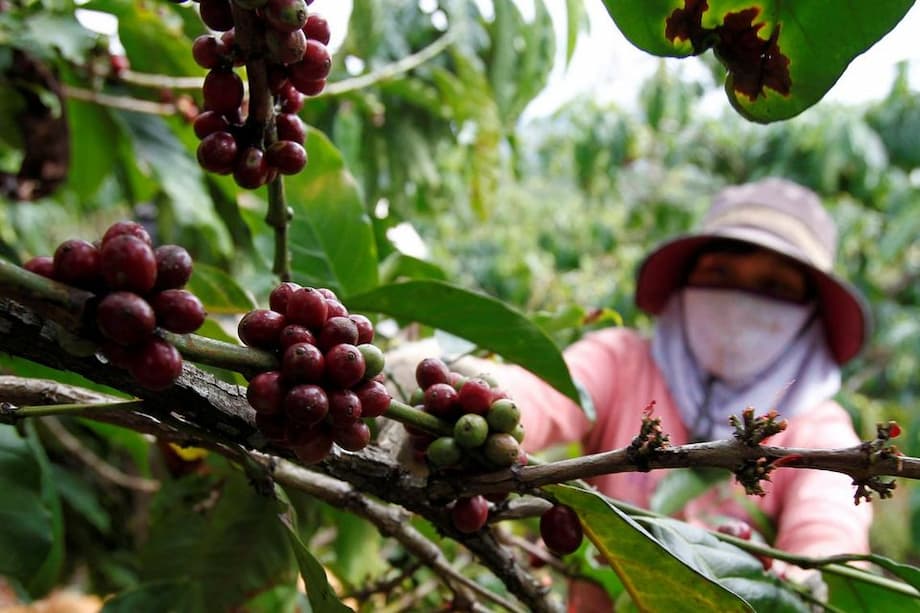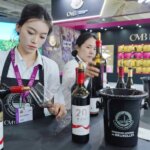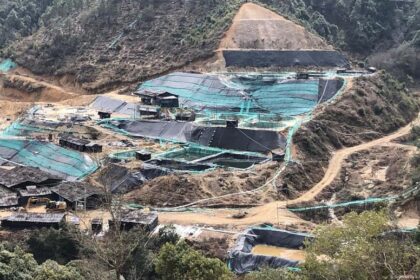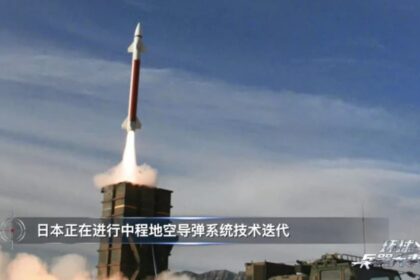Vietnam’s Coffee Boom: A New Era of Opportunity
Vietnam’s coffee industry is experiencing a historic surge, propelled by a perfect storm of global price hikes, shifting trade dynamics, and evolving consumer demand. As the world’s second-largest coffee exporter and the leading supplier of Robusta beans, Vietnam is seizing a rare opportunity to expand its influence and reshape its role in the international coffee market.
- Vietnam’s Coffee Boom: A New Era of Opportunity
- What’s Driving the Global Coffee Price Surge?
- Vietnam’s Export Performance: Record Revenues, Shifting Volumes
- Robusta Dominance and the Push for Value Addition
- Production Trends: Weather, Yields, and Sustainability
- Challenges: Value Capture, Technology, and Policy
- Global Market Dynamics: Vietnam’s Competitive Edge
- Innovation and the Rise of Processed Coffee
- Policy and the Path Forward
- In Summary
In 2024 and 2025, global coffee prices soared by up to 40%, driven by a combination of unfavorable weather in major producing countries, rising demand in established and emerging markets, and new geopolitical developments. Vietnam’s coffee export turnover has already set new records, with revenues surpassing $5.4 billion in the first half of 2025 and projections suggesting the $6 billion mark could be breached by year’s end. This remarkable growth is not just a windfall for exporters—it signals a pivotal moment for the entire Vietnamese coffee sector.
What’s Driving the Global Coffee Price Surge?
The dramatic rise in coffee prices can be traced to several converging factors:
- Climate Change and Weather Shocks: Droughts and frosts in Brazil—the world’s largest coffee producer—have slashed harvests, particularly of the prized Arabica variety. Colombia and Indonesia have faced similar setbacks, tightening global supply.
- Soaring Demand: Consumption is climbing in traditional markets like Europe and the US, but also in Asia, the Middle East, and Africa. Urbanization, changing lifestyles, and the proliferation of coffee shops are fueling this trend.
- Geopolitical Shifts: In August 2025, the US imposed a 50% tariff on Brazilian coffee imports, making Brazilian beans less competitive and redirecting demand toward other suppliers, including Vietnam and Colombia.
- Regulatory Changes: The European Union’s new anti-deforestation regulation (EUDR), set for full implementation in December 2025, is reshaping sourcing practices and putting a premium on traceable, sustainable coffee.
These dynamics have sent both Arabica and Robusta prices to multi-year highs. In Vietnam, farm-gate prices for Robusta beans reached nearly VND130,000 (about $5.7) per kilogram in mid-2025, while export prices exceeded $5,700 per ton—a record for the country.
Vietnam’s Export Performance: Record Revenues, Shifting Volumes
Vietnam’s coffee export story is one of both resilience and adaptation. Despite a 6.4% year-on-year decline in export volume in the first eight months of the 2024–2025 crop year, export value soared by 57.5%. This paradox—lower volumes but higher revenues—reflects the extraordinary price environment and Vietnam’s ability to capitalize on global shortages.
According to the Vietnam Coffee and Cocoa Association (Vicofa), the country exported about 1.12 million tons of coffee worth over $6.3 billion in the first eight months of the crop year. The Mercantile Exchange of Vietnam projects that if demand remains robust, total export revenue could surpass $6 billion in 2025, cementing Vietnam’s status as a coffee powerhouse.
Key export markets include:
- European Union: The EU remains the largest buyer, accounting for over 40% of Vietnam’s coffee exports. Germany, Italy, and Belgium are top importers, with Germany alone importing 184,000 tons worth $661 million in the first eight months of 2024.
- United States: The US is a critical market, especially for processed and specialty coffees. The new US tariffs on Brazilian coffee are expected to further boost demand for Vietnamese beans.
- Emerging Markets: Countries like China, India, Algeria, and Australia are rapidly increasing their imports of Vietnamese coffee, attracted by competitive pricing and growing consumer interest.
Vietnam’s strategic location near major shipping routes and its participation in free trade agreements, such as the EU-Vietnam Free Trade Agreement (EVFTA) and the Comprehensive and Progressive Agreement for Trans-Pacific Partnership (CPTPP), provide additional advantages by reducing tariffs and streamlining logistics.
Robusta Dominance and the Push for Value Addition
Vietnam’s coffee sector is built on Robusta, a variety prized for its bold flavor and high caffeine content. The country accounts for about 40% of global Robusta exports and 15% of total global coffee supply. The Central Highlands region—particularly provinces like Dak Lak, Gia Lai, and Lam Dong—produces over 90% of Vietnam’s coffee output.
However, this dominance comes with challenges. Robusta beans typically fetch lower prices than Arabica, and Vietnam’s exports have historically been dominated by raw, unbranded green beans. According to industry experts, only 12–15% of Vietnam’s coffee exports are “deep-processed” products—such as roasted, instant, or specialty coffees—compared to 30–40% in Brazil and Colombia.
Le Hoang Diep Thao, founder and CEO of TNI King Coffee, explains:
“Investing in deep processing helps companies multiply the value of their products significantly. But initial investments can be substantial, especially for instant coffee technology, which requires hundreds of billions of Vietnamese dong in capital. Not all businesses are financially capable of such investments.”
Large firms like Vinacafe, Trung Nguyen, and Nestlé have made significant strides in processing, but small and medium-sized enterprises often lack the resources to follow suit. As a result, Vietnam’s coffee sector risks remaining an “ingredient factory” for global brands unless it can move up the value chain.
Branding and Market Perception
Another hurdle is branding. While Vietnam is renowned for its production volume, its coffee brands are not yet household names internationally. Consumers in premium markets often associate quality with brands like Starbucks (US), Lavazza (Italy), or Nespresso (Switzerland), making it difficult for Vietnamese processed coffee to compete at the top end.
Experts and industry leaders argue that building a strong national coffee brand—akin to Colombia’s Juan Valdez or Thailand’s Jasmine rice—is essential for Vietnam to command higher prices and recognition.
Production Trends: Weather, Yields, and Sustainability
Vietnam’s coffee production is on an upward trajectory, despite recent weather-related setbacks. The 2023/24 crop was the smallest in four years due to drought, with output falling to around 26.5 million 60-kilogram bags. However, forecasts for 2025/26 are optimistic, with the United States Department of Agriculture (USDA) projecting a rebound to 31 million bags—a four-year high—thanks to improved weather and increased investment in farm inputs.
Farmers are responding to high prices by expanding cultivation and adopting better practices. The Western Highland Agriculture and Forest Science Institute (WASI) supplied 4–5 million seedlings for replanting in 2024, aiming to boost yields and resilience. The Ministry of Agriculture and Environment has set targets for specialty coffee production and is building a national coffee database to support traceability and compliance with international standards.
Sustainability is also gaining traction. Companies like Simexco Daklak have pioneered “farmer-first” supply chains and earned national recognition for green coffee initiatives. Compliance with the EU’s anti-deforestation regulation is a growing priority, with pilot projects underway to map coffee plantations and prove that Vietnamese coffee is not linked to deforestation.
Domestic Consumption and Changing Tastes
Vietnam’s domestic coffee consumption is rising alongside exports. Urbanization, a thriving café culture, and changing consumer preferences—especially among younger generations—are driving demand for specialty and ready-to-drink coffees. Over 500,000 coffee shops now operate across the country, from street vendors to modern chains like Highlands Coffee and Trung Nguyen Legend.
Domestic consumption is forecast to reach 4.9 million bags in 2025/26, up from 4 million the previous year. This internal demand provides a buffer against export volatility and encourages further investment in processing and branding.
Challenges: Value Capture, Technology, and Policy
Despite its successes, Vietnam’s coffee industry faces several structural challenges:
- Low Value Capture: Most exports are still raw beans, limiting the sector’s ability to benefit from high retail prices abroad. For example, while the EU imported Vietnamese coffee at around €2,323 per ton in 2022, it paid much higher prices for beans from Brazil, Honduras, and Colombia.
- Technology Gaps: Deep processing requires advanced technology and significant capital investment. Only a handful of large firms have the capacity to produce instant and specialty coffees at scale.
- Brand Recognition: The lack of a strong national brand means Vietnamese coffee is often sold as a commodity, not a premium product.
- Regulatory Pressures: New taxes, such as the 5% VAT on coffee beans introduced in July 2025, have raised domestic prices and sparked debate over competitiveness. Exporters are lobbying for exemptions to maintain their edge in global markets.
- Compliance Costs: Meeting the EU’s deforestation regulation and other international standards requires investment in traceability, certification, and sustainable practices.
Industry experts recommend a multi-pronged strategy: invest in deep processing technology, offer preferential credit policies to businesses, build a national coffee brand, and prioritize emerging markets where demand is growing fastest.
Global Market Dynamics: Vietnam’s Competitive Edge
Vietnam’s competitive advantages are becoming more pronounced as global market dynamics shift:
- Lower Production Costs: Large-scale cultivation and efficient farming practices allow Vietnam to offer high-quality Robusta at attractive prices.
- Diversified Markets: Vietnam exports to over 80 countries, reducing reliance on any single market and spreading risk.
- Trade Agreements: FTAs with the EU, Asia-Pacific, and other regions lower tariffs and facilitate smoother trade flows.
- Supply Chain Resilience: The country’s ability to maintain stable supply amid global disruptions has enhanced its reputation as a reliable partner.
Geopolitical developments are also working in Vietnam’s favor. The US tariff on Brazilian coffee is expected to shift some American demand toward Vietnamese and Colombian beans. Meanwhile, Brazil’s own export volumes have been constrained by weather and farmer stockpiling, further tightening global supply.
Innovation and the Rise of Processed Coffee
There are signs of transformation within Vietnam’s coffee sector. Processed coffee exports—both soluble and roasted—grew by 35% in 2024, reaching $1.18 billion and accounting for over 21% of total export value. Companies like Trung Nguyen Legend are expanding instant coffee exports to the Middle East and Eastern Europe, while Vinacafe is targeting the ASEAN market. Start-ups in Lam Dong and Gia Lai are building specialty brands for Japan and South Korea, often partnering with local firms to process and sell roasted coffee directly, doubling selling prices and boosting farmer incomes.
Major multinationals, including Nestlé, Trung Nguyen, and Highlands Coffee, have collectively invested $170 million in new processing plants between 2024 and 2025 to meet rising domestic and export demand. These investments are expected to accelerate the shift toward higher-value products and greater international recognition.
Policy and the Path Forward
To fully realize its potential, Vietnam’s coffee industry must address several policy and strategic priorities:
- Deep Processing Investment: Encourage more firms to invest in technology for instant, roasted, and specialty coffees through preferential loans and tax incentives.
- Brand Building: Launch coordinated campaigns to promote Vietnamese coffee as a premium, sustainable product in global markets.
- Market Diversification: Target emerging markets in the Middle East, South Asia, and Africa, where coffee consumption is rising rapidly.
- Sustainability and Compliance: Invest in traceability, certification, and sustainable farming to meet new international standards and consumer expectations.
- Support for Smallholders: Provide training, financing, and market access to small and medium-sized producers to ensure broad-based growth.
Nguyen Nam Hai, president of Vicofa, summarizes the sector’s outlook:
“The international coffee market has never been as favorable as it is now. With high prices and growing demand, coupled with Vietnam’s stable supply, the country is in an advantageous position. But to move beyond being just an ingredient supplier, we must invest in processing and build a global brand.”
In Summary
- Global coffee prices have surged by up to 40% in 2024–2025, driven by weather shocks, rising demand, and geopolitical shifts.
- Vietnam is the world’s largest Robusta exporter and second-largest coffee exporter overall, with export revenues projected to surpass $6 billion in 2025.
- Despite lower export volumes, high prices have boosted revenues and encouraged investment in production and processing.
- Challenges remain, including low value capture from raw bean exports, limited deep processing capacity, and weak international branding.
- Major investments in processing, sustainability, and branding are underway, with a focus on emerging markets and compliance with new regulations.
- Vietnam’s coffee industry stands at a crossroads, with the potential to become a global leader not just in volume, but in value and quality as well.












